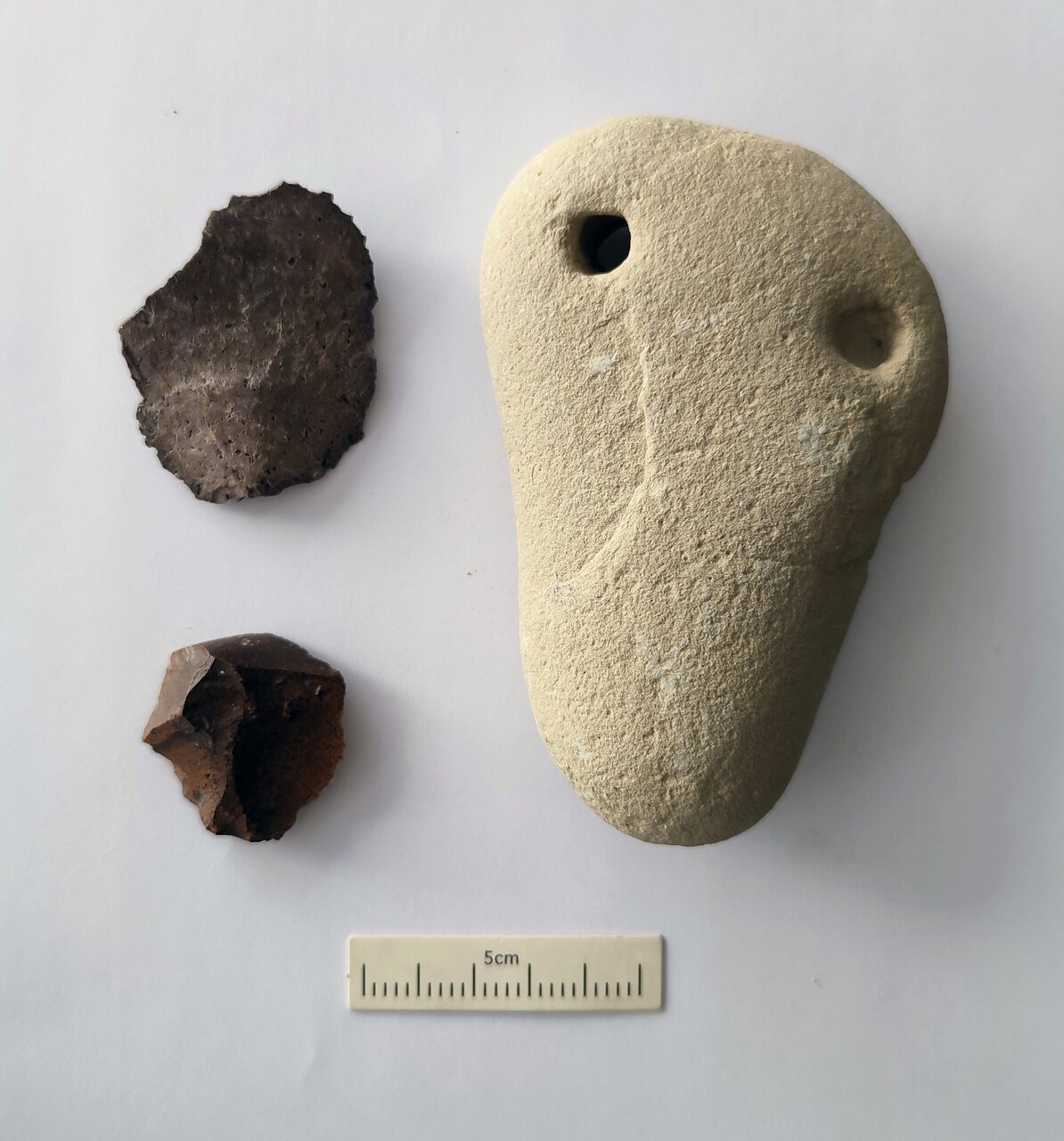Archaeologists uncover potential evidence of early maritime activity in southern Iran

TEHRAN - Recent excavations at Iran’s Kopal archaeological site have revealed artifacts that could shed new light on early maritime practices, though researchers emphasize the need for further analysis.
The discoveries include a modified flat pebble with holes—possibly a fishing weight or small anchor—found near stone flakes exhibiting Paleolithic characteristics.
Mortaza Hessari, head of the excavation team, pointed out the significance of these finds: “The close association between the holed cobble and stone flakes made with Paleolithic techniques raises important questions about when coastal communities first began utilizing marine resources in this region.” He cautioned, however, that “while the flakes show typical Paleolithic features, the cobble itself lacks similar weathering patterns, so we must investigate further before drawing conclusions.”
Hessari explained that the team is considering multiple interpretations: “We could be looking at genuine Paleolithic maritime activity, or perhaps later communities reusing an ancient landscape. The proximity of 4th-millennium BC pottery in nearby trenches shows this site had long-term coastal use, but we need dating evidence to determine if it extends back to the Paleolithic.”
As salvage excavations continue ahead of road construction, Hessari stressed the importance of methodical research: “We’re conducting microscopic analysis and geological dating to clarify the relationship between these artifacts. Whatever we ultimately discover, this site highlights the Makran coast’s rich—and still poorly understood—maritime heritage.”
The findings have sparked interest among scholars studying early human adaptation to coastal environments, though as Hessari noted, “This is just the beginning of a much longer scientific conversation.”
AM
Leave a Comment